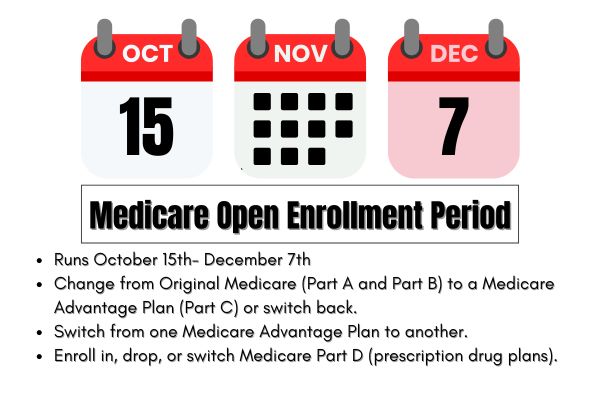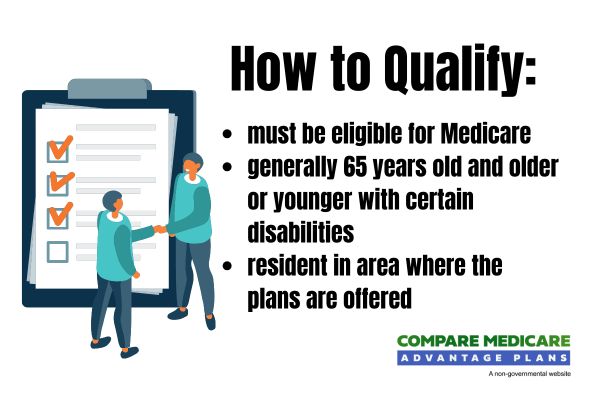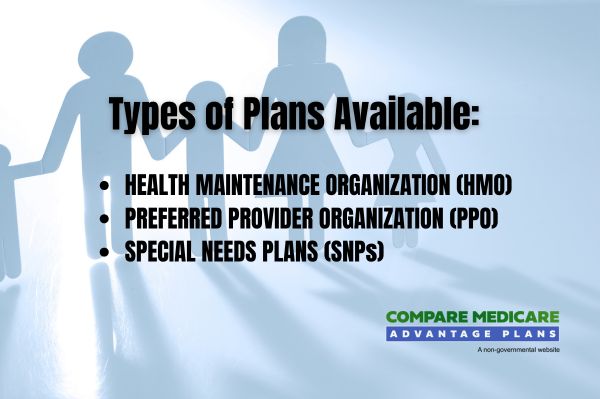Wellcare Medicare Advantage Plans 2026
Curious about Wellcare Medicare Advantage Plans
Key Takeaways
- Wellcare Medicare Advantage Plans offer enhanced benefits that may go beyond Original Medicare, including coverage for dental, vision, and hearing services.
- There are various plan types available, such as HMO, PPO, and Special Needs Plans (SNPs), each catering to different healthcare needs and preferences.
- Enrollment in Wellcare plans requires meeting specific eligibility criteria, and understanding the enrollment periods is crucial for timely application.
Compare Plans in One Step!
Enter Zip Code
Understanding Wellcare Medicare Advantage Plans 2026

Wellcare Medicare Advantage Plans provide a robust alternative to Original Medicare, offering additional benefits that go beyond standard hospital and medical coverage. These plans are designed to reduce out-of-pocket expenses, featuring low or no deductibles and various options to fit different healthcare needs. For instance, Wellcare plans often cover dental, vision, and hearing services, which are not included in Original Medicare. As a result, they are a popular choice for those seeking to enhance their healthcare coverage affordably.
There are several types of Wellcare Medicare Advantage Plans, each tailored to different preferences and requirements. Whether you prefer the coordinated care of an HMO, the flexibility of a PPO, or the specialized support of a Special Needs Plan (SNP), Wellcare has an option that can cater to your specific needs. Evaluating copay amounts and other cost-related factors is essential, as they directly impact the overall cost of accessing services.
Importantly, all Medicare Advantage plans, including those offered by Wellcare, are required to provide at least the same benefits as Original Medicare. This means that regardless of the plan you choose, you can rest assured that your basic hospital and medical needs will be covered. However, the added benefits and reduced costs make Wellcare Medicare Advantage Plans an attractive option for many beneficiaries.
Types of Wellcare Medicare Advantage Plans Available
Wellcare offers a variety of Medicare Advantage Plans to cater to different healthcare needs and preferences. These include Health Maintenance Organization (HMO) plans, Preferred Provider Organization (PPO) plans, and Special Needs Plans (SNPs). Each type of plan has its unique features and benefits, allowing beneficiaries to choose the one that best suits their medical and financial circumstances.
Knowing the differences between these plans helps in making an informed decision about plan benefits. Below, we delve into the specifics of each type of plan, highlighting their distinct advantages and potential drawbacks.
HMO Plans
HMO plans aim to deliver coordinated care. This is achieved through a network of healthcare providers. Members are required to select a primary care provider (PCP) who oversees their overall healthcare and provides referrals to see specialists. This structure ensures that care is well-coordinated, which can lead to better health outcomes and more efficient use of resources.
One of the significant advantages of HMO plans is their cost-effectiveness. These plans generally have lower monthly premiums and out-of-pocket costs compared to other types of plans. However, it’s important to note that HMO plans typically limit coverage to a network of doctors and hospitals, and out-of-network services may not be covered except in emergencies.
PPO Plans
PPO plans offer more flexibility in choosing healthcare providers. Unlike HMO plans, PPO members can see both in-network and out-of-network doctors without needing referrals. This flexibility makes PPO plans a popular choice for those who want more freedom in managing their healthcare.
Wellcare’s PPO plans provide a broader range of coverage compared to traditional Medicare, including additional benefits such as dental, vision, and prescription drug coverage. Members can see specialists without referrals, simplifying the process of obtaining specialized care. However, accessing out-of-network providers may result in higher costs.
Special Needs Plans (SNPs)
Special Needs Plans (SNPs) are tailored for individuals with specific healthcare needs, such as chronic conditions or dual eligibility for Medicare and Medicaid. These plans offer specialized care and services designed to meet the unique needs of their members.
For those eligible for both Medicare and Medicaid, Dual-Eligible Special Needs Plans (D-SNPs) provide additional benefits at no extra cost. These plans often include coverage for dental, vision, hearing, and mental health services, ensuring comprehensive care for their members.
Depending on whether the plan operates as an HMO or PPO, members may need to choose a primary care provider and may require referrals for certain specialist services.
Overview of Wellcare Medicare Advantage Plans 2026
Wellcare Medicare Advantage Plans offer comprehensive healthcare coverage that goes beyond what Original Medicare provides. These plans can feature low or even no monthly premiums, making them an affordable choice for many beneficiaries. The additional benefits typically include dental, vision, and hearing services, which are not part of Original Medicare.
Wellcare offers a variety of plan types, including HMO, PPO, D-SNP, and C-SNP, catering to a wide range of healthcare needs. These plans often have lower deductibles and limited out-of-pocket expenses compared to Original Medicare, providing financial protection and peace of mind for members.
Covered Services and Benefits

Wellcare Medicare Advantage Plans cover a broad spectrum of services, ensuring that members receive the care they need. Essential services such as hospital care and outpatient medical coverage are included, aligning with the benefits provided by Original Medicare.
In addition to these fundamental services, Wellcare plans offer extra benefits like dental, vision, and hearing coverage, which are not part of Original Medicare. Prescription drug coverage is another significant benefit, helping members manage their medication costs effectively. Many Wellcare plans come with low or no deductibles, making healthcare more affordable for members.
Key Benefits of Wellcare Medicare Advantage Plans
One of the standout features of Wellcare Medicare Advantage Plans is their affordability. Many plans offer low or zero monthly premiums, making them accessible to a broad range of beneficiaries. Additionally, these plans include extra benefits that Original Medicare does not cover, such as dental, vision, and hearing services.
With low or no deductibles, Wellcare Medicare Advantage Plans significantly reduce out-of-pocket expenses for members. The coordinated care provided by these plans ensures that health conditions are managed effectively through integrated services, enhancing the overall healthcare experience.
Additional Health Services
Wellcare’s D-SNP plans offer enhanced benefits for individuals eligible for both Medicare and Medicaid. These plans provide additional coverage for dental, vision, hearing, and mental health services, ensuring comprehensive care for members.
Members of a Wellcare D-SNP do not require referrals to see in-network specialists, making it easier to access the necessary care. This streamlined approach to healthcare allows for better management of chronic conditions and other complex health needs.
Enrollment Process for Wellcare Medicare Advantage Plans 2026
Enrolling in Wellcare Medicare Advantage Plans is straightforward. Individuals can apply online, by phone, or by mailing an application. Applicants must meet Medicare eligibility requirements, generally by turning 65 or qualifying through disability.
Timely application depends on understanding the enrollment periods. There are specific times during the year when individuals can enroll, switch plans, or make changes to their coverage.
When to Enroll

Enrollment in a Medicare Advantage Plan can begin during the Initial Enrollment Period, which starts three months before an individual turns 65 and lasts until three months after. If you are new to Medicare Part B, there is a two-month window to enroll in a plan after obtaining both Part A and Part B.
The Annual Enrollment Period from October 15 to December 7 each year allows beneficiaries to review and change their Medicare plans. Additionally, the Medicare Advantage Open Enrollment Period from January 1 to March 31 provides an opportunity to switch plans or return to Original Medicare.
Different enrollment periods
There are three main enrollment periods for Medicare: the Initial Enrollment Period, the Annual Enrollment Period (AEP), and Special Enrollment Periods (SEP). The Initial Enrollment Period begins three months before you turn 65 and lasts for three months after your birthday.
The Annual Enrollment Period allows those who missed their Initial Enrollment to enroll in or change their Medicare plans. Special Enrollment Periods are triggered by significant life events, such as moving or losing current coverage, allowing changes to coverage outside regular enrollment times.
OEP, AEP, Special Enrollment
The Medicare Advantage Open Enrollment Period (OEP) runs from January 1 to March 31 each year, enabling current Medicare Advantage members to switch plans or revert to Original Medicare. During the OEP, only those enrolled in a Medicare Advantage plan can make changes. If changes are made during the OEP, the new coverage typically takes effect on the first day of the month following the request.
The Annual Enrollment Period (AEP) from October 15 to December 7 allows everyone with Medicare to make broader changes to their coverage. Special Enrollment Periods (SEP) can also provide opportunities to change plans when specific life events occur.
Costs Associated with Wellcare Medicare Advantage Plans 2026
The costs associated with Wellcare Medicare Advantage Plans can vary, but they generally offer competitive pricing compared to Original Medicare. In 2024, the maximum out-of-pocket expense for Medicare Advantage plans is set at $8,850, reflecting an increase from the previous year. The overall financial expectation indicates that Medicare Advantage payments from the government to plans will increase by approximately 3.70% from 2024 to 2025.
Understanding these costs is crucial for beneficiaries to make informed decisions about their healthcare coverage and lower costs.
Premiums and Co-Pays
Monthly premiums for Medicare Advantage plans can vary by the specific plan chosen and may change annually. Wellcare Medicare Advantage plans are designed to maintain stable premiums and benefits, contributing to a consistent overall cost structure for enrollees. In 2025, the average base beneficiary premium for Medicare Part D is projected to be $36.78, an increase from the previous year.
The national average monthly bid amount (NAMBA) for Part D plans is expected to rise significantly to $179.45 in 2025. Beneficiaries can expect an estimated average government subsidy of $142.67 per plan in 2025. The Inflation Reduction Act aims to limit the average premium increases for Medicare Part D enrollees to about $2 per month.
Out-of-Pocket Maximums
Expenses paid towards copayments, coinsurance, and deductibles count towards the out-of-pocket maximum for Medicare Advantage plans. For the year 2025, there is a cap on out-of-pocket expenses set at $2,000, impacting beneficiary costs significantly in terms of annual spending limits.
This out-of-pocket limit encompasses all deductibles, copayments, and coinsurance for covered drugs but excludes premiums and drugs not covered by the plan. Once members reach the out-of-pocket limit, Wellcare plans cover 100% of the allowed healthcare costs for the remainder of the year.
Covered Services and Benefits
Wellcare Medicare Advantage Plans offer extensive coverage that includes services often not covered by Original Medicare. These additional services include dental, vision, hearing, and mental health services, which can significantly enhance the overall quality of healthcare for members. The benefits provided by Wellcare plans can vary depending on the specific plan and the member’s geographical location, ensuring that the healthcare needs of different communities are met effectively.
Members who qualify for Dual-Eligible Special Needs Plans (D-SNPs) receive extra support services at no additional cost, making these plans particularly valuable for those eligible for both Medicare and Medicaid. Furthermore, Wellcare plans typically do not require referrals to see in-network specialists, simplifying the process of accessing specialized care.
How to Qualify for Wellcare Medicare Advantage Plans 2026

Qualifying for Wellcare Medicare Advantage Plans involves meeting specific eligibility criteria. Individuals turning 65 are generally eligible, as are those who have been receiving Social Security disability benefits for at least 24 months. Additionally, individuals who have experienced significant life changes, such as moving to a new area or losing current health coverage, may also qualify for Special Enrollment Periods.
Those eligible for both Medicare and Medicaid can benefit from Wellcare’s Dual-Eligible Special Needs Plans (D-SNPs), which offer comprehensive coverage tailored to their unique healthcare needs. Eligibility also extends to spouses entitled to Social Security benefits, providing flexibility for couples.
Knowing these qualifications ensures timely and appropriate enrollment in a Wellcare Medicare Advantage Plan.
Contracted Network and Access to Care
Wellcare Medicare Advantage Plans operate through a network of healthcare providers who have agreements to deliver services to members. This network includes a wide range of providers, ensuring that members have access to necessary medical services. Access to specialists may require a referral from a primary care provider within the Wellcare network, though urgent care centers can typically be accessed without referrals.
Emergency services are available anywhere in the U.S. without prior authorization, providing peace of mind for members traveling or facing unexpected medical situations. Additionally, Wellcare offers a 24-hour Nurse Advice Line to assist members with immediate health inquiries and decision-making regarding their care.
Comparing Wellcare Medicare Advantage Plans to Original Medicare
When comparing Wellcare Medicare Advantage Plans to Original Medicare, several key differences stand out. Original Medicare is government-managed and includes basic hospital (Part A) and medical (Part B) insurance, while Medicare Advantage, provided by private companies like Wellcare, offers additional benefits. These extra benefits often include dental, vision, and hearing services, which are not covered by Original Medicare.
Another significant difference is the structure of costs and coverage. Medicare Advantage plans, including those from Wellcare, typically have lower or no deductibles and capped out-of-pocket expenses, providing financial protection for beneficiaries. In contrast, Original Medicare does not have an out-of-pocket spending limit, which can lead to higher overall costs for beneficiaries.
Coverage Differences
Wellcare Medicare Advantage Plans bundle the benefits of Original Medicare with additional services such as dental, vision, and wellness offerings. All Medicare Advantage plans must include the same basic coverage as Original Medicare, specifically Part A and Part B, ensuring that fundamental healthcare needs are met.
One of the most notable differences is the inclusion of prescription drug coverage in many Medicare Advantage plans, which is not typically part of Original Medicare. Additionally, Wellcare’s plans offer lower or no deductibles and capped out-of-pocket expenses, providing a significant financial advantage over Original Medicare.
Cost Comparisons
Medicare Advantage plans, including those from Wellcare, generally offer a lower out-of-pocket maximum compared to Original Medicare, providing financial protection to beneficiaries. Many Wellcare Medicare Advantage plans feature low or zero monthly premiums, making them an attractive option for cost-conscious beneficiaries.
When comparing costs, it’s important to consider copayments for services, as these can vary significantly among different Wellcare plans and Original Medicare. Overall, Medicare Advantage plans tend to offer reduced deductibles and additional benefits, such as dental and vision care, which are not covered by Original Medicare.
Emergencies and Referrals

One of the key features of Wellcare Medicare Advantage Plans is the comprehensive coverage for emergencies. Members are entitled to emergency care anywhere in the U.S. without needing prior approval, ensuring they can receive immediate medical attention when needed. This coverage provides peace of mind for members, especially those who travel frequently.
For specialist services, referrals are typically required through a primary care physician, particularly in HMO plans where coordinated care is emphasized. However, Wellcare plans offer flexibility through a point of service (POS) feature, allowing members to receive services outside of the network under certain conditions.
Additionally, Wellcare provides a 24-hour Nurse Advice Line to assist members with medical inquiries and decision-making regarding their care.
Summary
Wellcare Medicare Advantage Plans
In conclusion, Wellcare Medicare Advantage Plans provide enhanced coverage and financial protection, ensuring that members receive the care they need without excessive costs. As you consider your healthcare options
Frequently Asked Questions
→ What are the main benefits of Wellcare Medicare Advantage Plans compared to Original Medicare?
Wellcare Medicare Advantage Plans provide enhanced coverage with benefits like dental, vision, and hearing services, lower or no deductibles, and capped out-of-pocket expenses, making them more comprehensive and affordable than Original Medicare.
→ When can I enroll in a Wellcare Medicare Advantage Plan?
You can enroll in a Wellcare Medicare Advantage Plan during the Initial Enrollment Period, the Annual Enrollment Period from October 15 to December 7, or during Special Enrollment Periods due to significant life events.
→ What types of Wellcare Medicare Advantage Plans are available?
Wellcare Medicare Advantage Plans include HMO, PPO, and Special Needs Plans (SNPs) to accommodate various healthcare needs and preferences. Each plan type is designed to provide tailored care options for its members.
→ How do the costs of Wellcare Medicare Advantage Plans compare to Original Medicare?
Wellcare Medicare Advantage Plans generally provide lower or no deductibles, capped out-of-pocket expenses, and low or zero monthly premiums, making them more cost-effective compared to Original Medicare.
→ Do Wellcare Medicare Advantage Plans cover prescription drugs?
Yes, many Wellcare Medicare Advantage Plans do cover prescription drugs, unlike Original Medicare which usually does not.

ZRN Health & Financial Services, LLC, a Texas limited liability company





